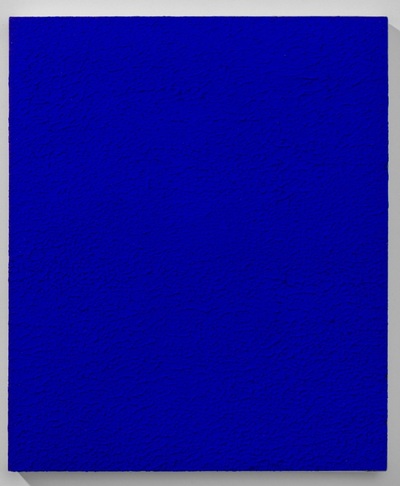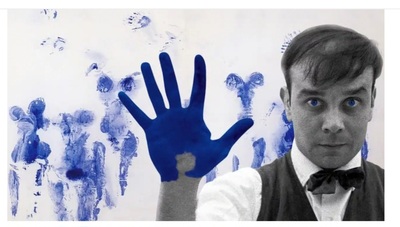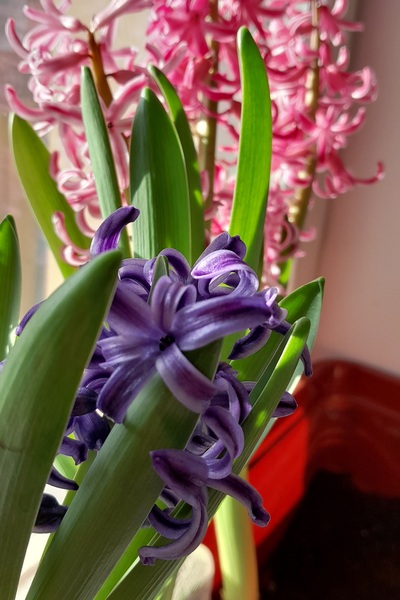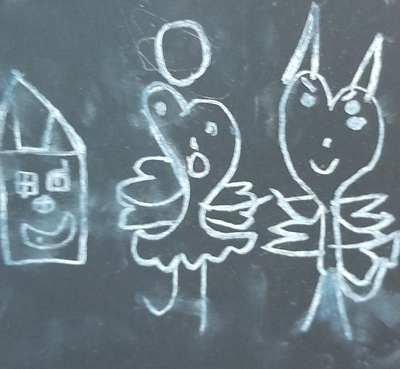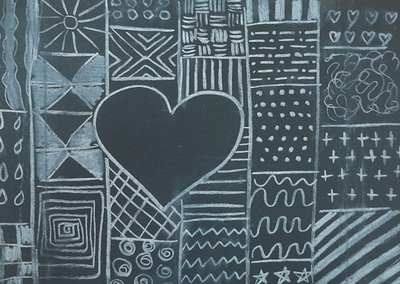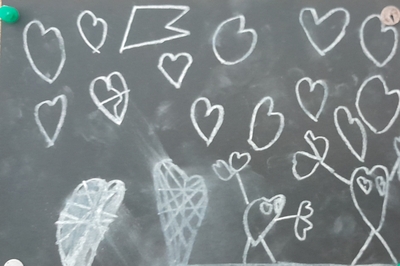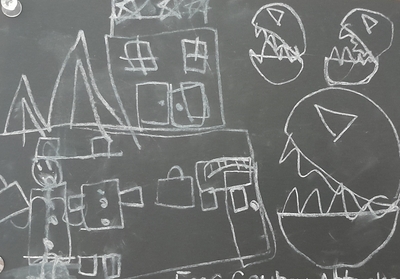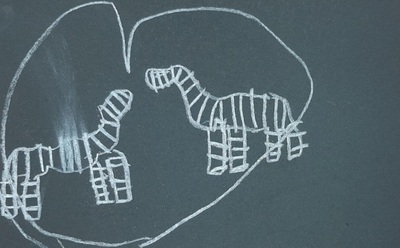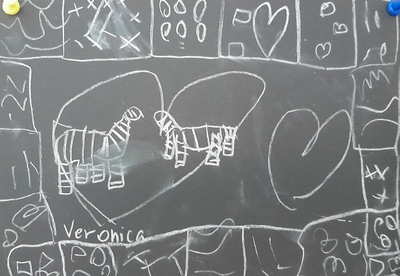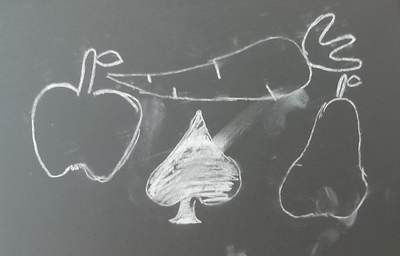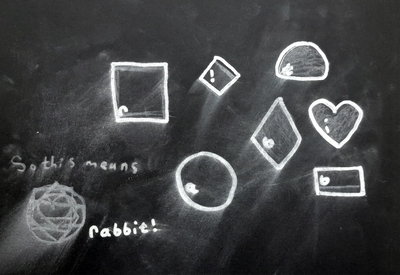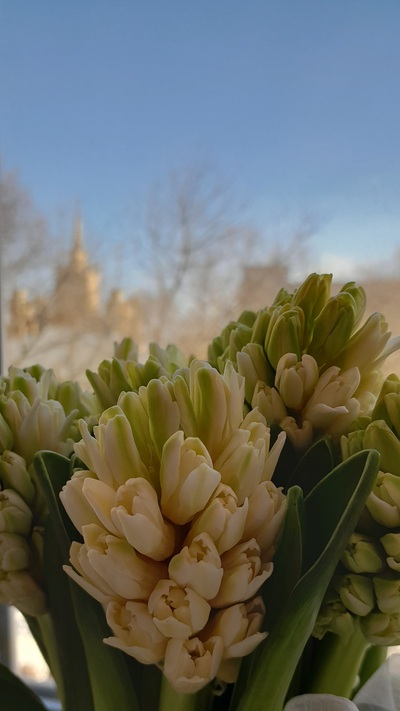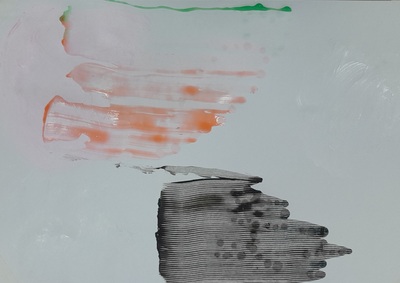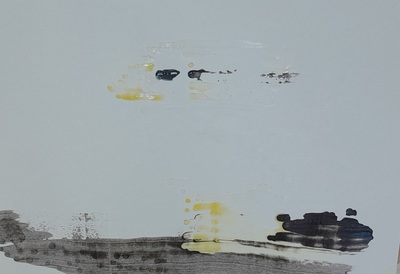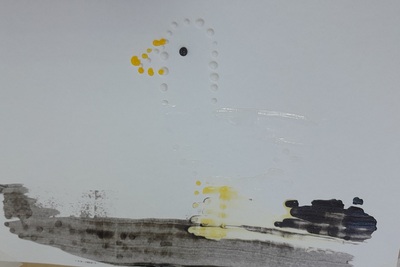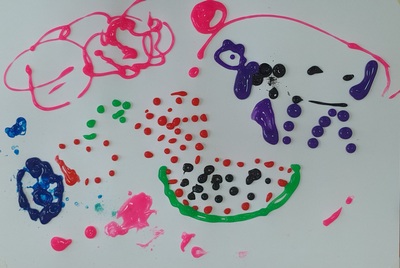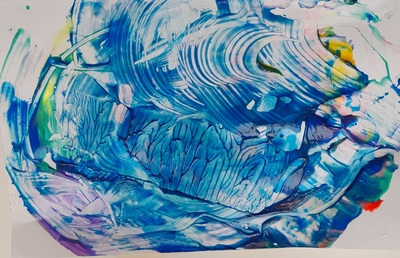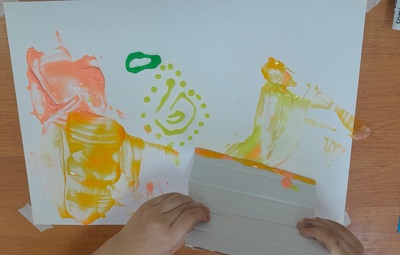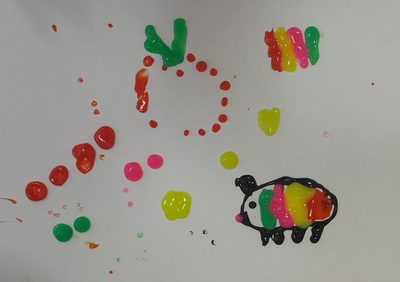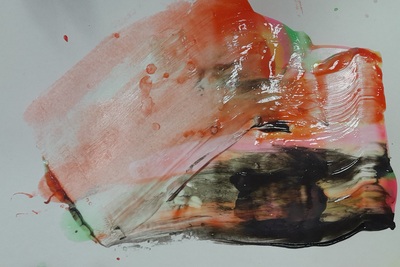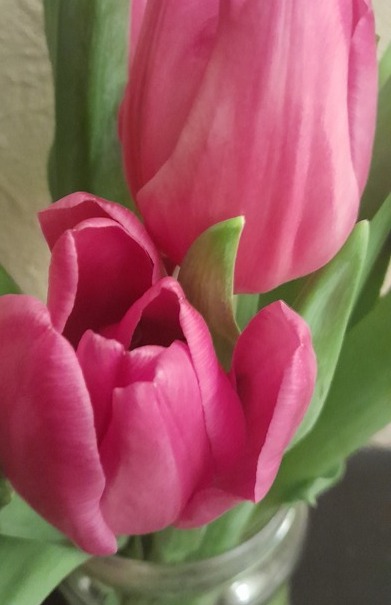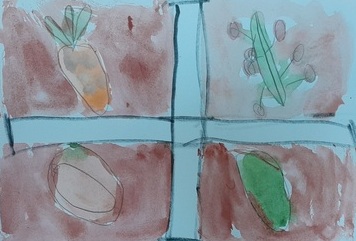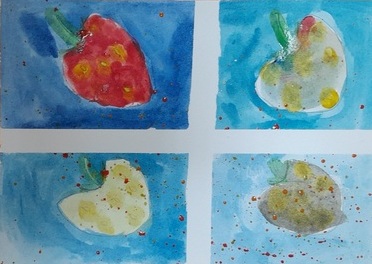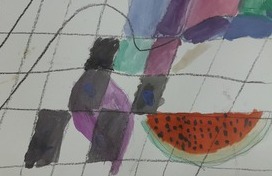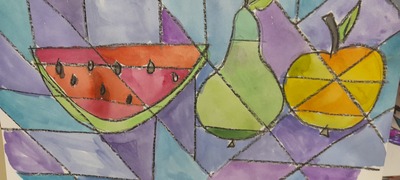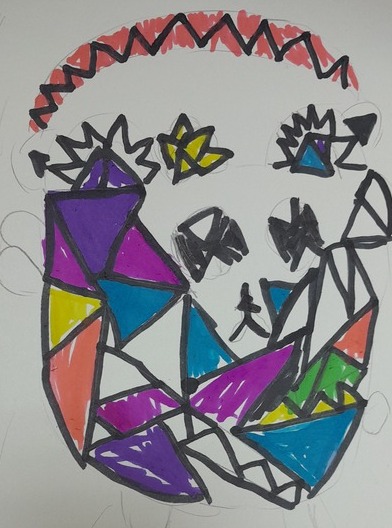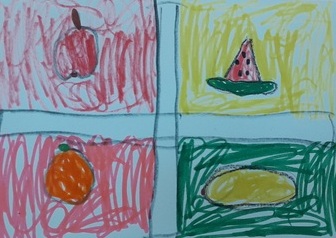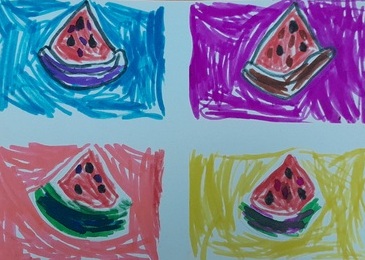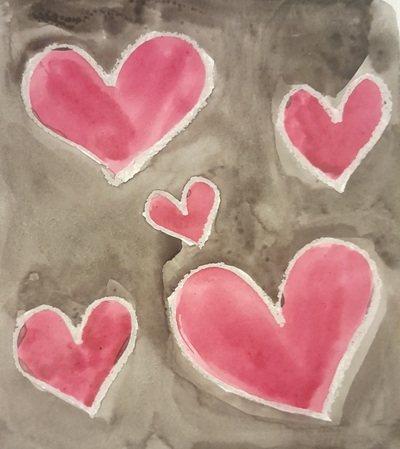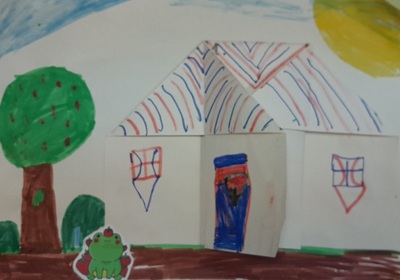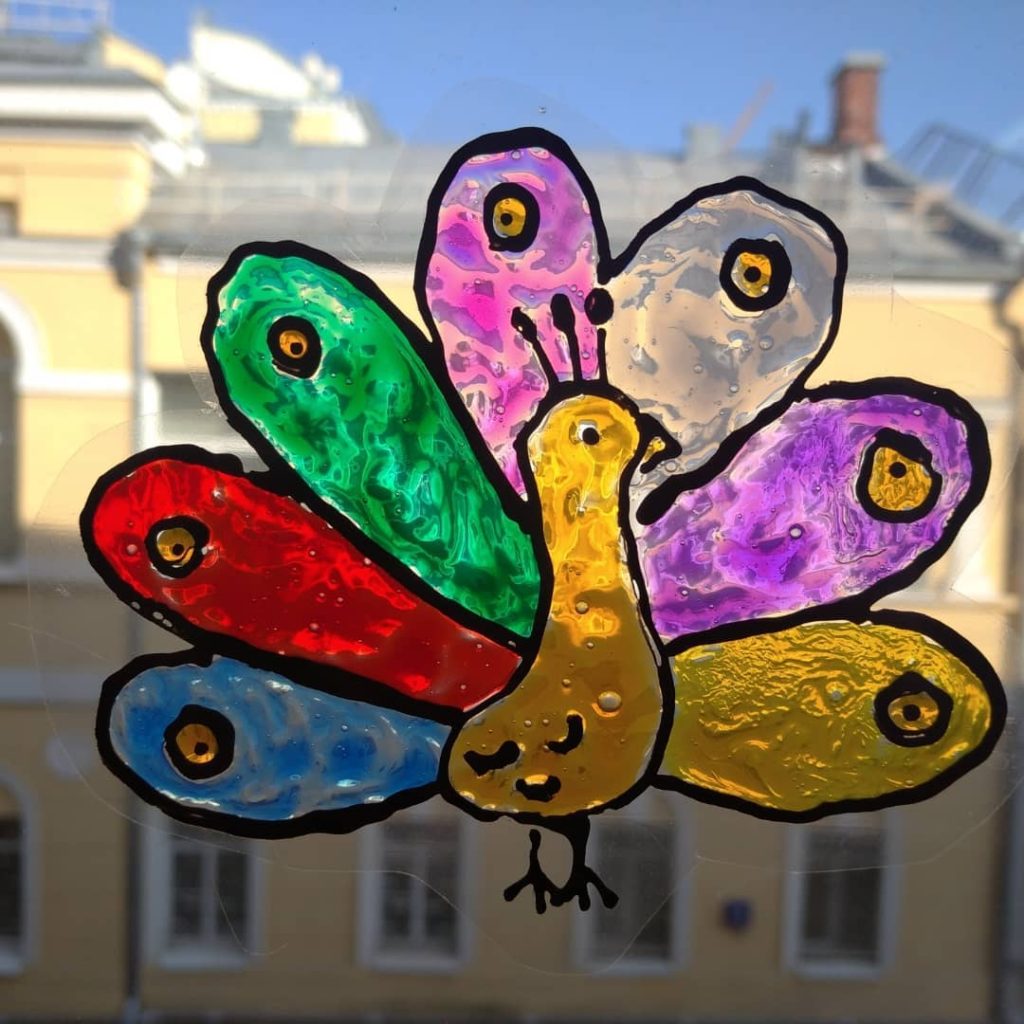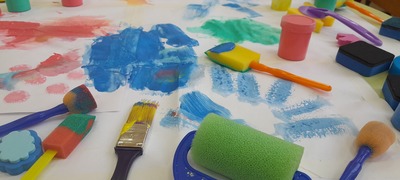
The language
Bearing in mind the artist and his approach to painting, I decided to choose the body as the focus for this lesson (and probably for the few lessons to come, too, although this still needs to be confirmed). For that reason, we have introduced and revised the body parts using the wordwall cards and then we played one of my favourite movement games: Shake your nose! It can be played with a dice and a list of six verbs or with an online spinner. The teacher needs to introduce and demonstrate the verbs. Afterwards, they spin the wheel, read the verb and choose the body part to perform the action. Naturally, the kids take over as soon as they are ready and ask the whole class to perform the silly actions: shake your nose, clap your feet, move your mouth and what not. Of course, everyone’s favourite is ‘freeze’:-)

The artist
I have found Yves Klein only recently, while looking for something else entirely, and when I did, I was surprised, taken aback and mesmerized, all at the same time. Mesmerized – because he is just amazing, surprised – because I had never heard of him and taken aback – because Yves could be (or could have been) the inspiration for one of my favourite sci-fi characters from Alistair Reynolds’ Zima Blue. And I did NOT know that…
Anyway, Yves was introduced with this one photograph because it encapsulate everything we need to know about him, his favourite method and his favourite colour, all at once. We looked at a few examples of what Yves Klein created and we also talked about anthropometry but, because of the age of my students, we limited that to ‘painting with different body parts’ and ‘painting with things’. We did not look at any of the performances. That was enough to spark an interest and they kept asking questions, trying to imagine what the process would look like.
The kids got really interested in the blue rectangle and started to compare it with Malevich’s black square (I taught them well). Sasha, who wildly fights the idea of copying (which I am trying to convince her to think of as ‘inspiration’) asked: ‘Who was first, this Klein or Malevich?’. ‘Malevich’, I said. She rolled her eyes and commented ‘Plagiarism!’…
The art
Initially, the task looked very simple: try to become Yves, for one lesson and to prepare a monochrome picture, using only hands and fingers but all that started to change in the classroom, because I decided to read the room and adjust.
The classroom set-up needed a small adjustment in order to faciliate work. Our tables stand in one big U, with a lot of room in the centre. I brought an IKEA kids table, covered it with paper and decided that that would be our pallete, with four sections for the colours and for more room for mixing the colours. The kids were told to move withing the U, going from the round table to their work stations. This worked very well. We could use one set of paints, everyone was on the move and since the table was in the centre, the kids pretty much avoided bumping into each other and invading each other’s space. We had tissues on the ready but they were also allowed to go out to the nearby bathroom to wash the hands when necessary. We used the aprons to protect the clothes.
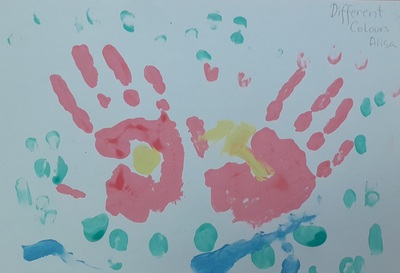
The younger kids were working only with their hands because it was only later that I bought a set of kiddies sponge rollers and stamps. I brought them to my Wednesday lesson, for the older students and these had a much wider scope of an opportunity to become Yves for a day, who also used a variety of rollers in his work.
One thing that I did not take into consideration (silly teacher!) was the fact that a new material in the classroom will have its own implications. First of all, my students really got excited about trying out what can be done with finger paints and with rollers and stamps. It is perfectly natural, you get a new toy, you want to play with it and see what it can do. Showing a new tool and setting boundaries in the way it is used is just unreasonable! That’s what I learnt last week.
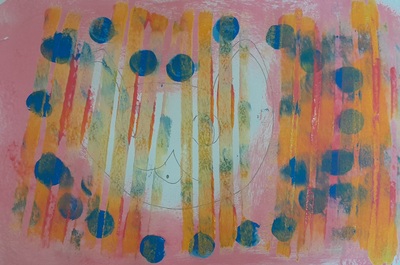
The other, related, thing is that I found sets of finger paints of only four colours, they had amazing shades. Blue was the most beautiful baby blue, green was more emerald than just simple green and the red one was something between ruby and light brick and they all looked very tempting. When I took the colours, a few students asked the same question, both in the younger and the older group: ‘Do we have to use only one colour?’ and they were so sad about it, that I really did not have the guts in me to go monochrome. I said that monochrome was recommended but that they could use whatever they wanted. The funny thing is that the kids did like the shade of the Klein’s blue and the whole approach to painting but, when it came to their own creations, they still wanted to be able to use all of them.
The lesson was a success (unless you want to consider the abandoning of the monochrome as a distaster, which I don’t). The kids got really involved into their interaction with the new tool and the new technique and it was great to see how they were experimenting and making their decisions as regards the task interpretation.
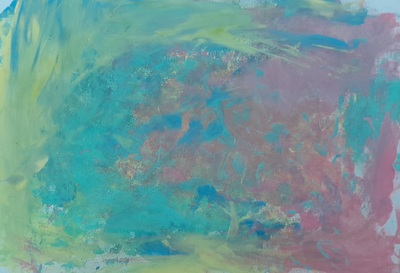
In the younger group, the students decided to ‘simply’ paint using fingers and hands, some used prints trying to compose a painting out of them. Many of my kids focused on experimenting with mixing the colours and interpreting the outcomes. The older students were more decisive regarding the topic of their paintings, once again depicting their favourite theme, a goose, a rabbit and a fox, in a new way. In both groups, many students created more than one picture because once we started, the ideas came flowing (here you will find another post, when we played with the younger group with all the stamps).
I used the finger paints but in a more limited capacity, only to write letters or to use dots, this was the first, fully-fledged lesson and I have to say – I loved the material. Not only does it wash easily, it is is very liquidy and flowing so it can be used in many ways. It is also perfect for printing as it dries very quickly and it can be combined with drawings or stickers and collage within the same lesson. Lots of potential there and we will definitely be coming back.
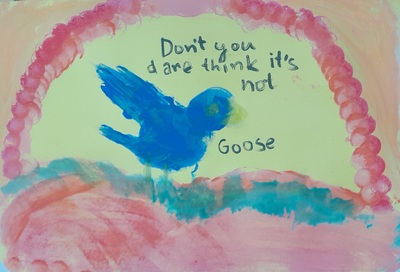
There is a little post scriptum to this post here! Don’t forget to check it out!
Happy teaching!
